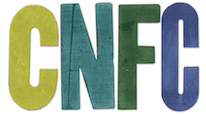For many of us, the label “creative nonfiction” is still somewhat awkward. Also known as literary or narrative nonfiction, the genre is almost as difficult to define as it is to name. It is perhaps easier to start with what creative nonfiction does NOT include: technical or instructional works, conventional newspaper reportage, and nonfiction work characterized by a neutral (so-called objective) third person perspective.
Characteristic of creative nonfiction is a personal, identifiable voice. The writer is usually quite present in the text. Works of creative nonfiction include – but are not limited to – memoirs, biography, historical investigation, literary journalism, political commentary, social or cultural criticism, and essays that are personal or lyric or narrative.
The emphasis in creative nonfiction is on the use of inventive and dramatic techniques when writing about the actual world rather than a fictional one. The adjective “creative” in creative nonfiction is occasionally misunderstood. Being creative in their work does not license nonfiction writers to invent facts or imagine experiences as fiction writers do. Creative nonfiction allows its writers to access the same techniques available to fiction writers without misrepresenting the actual events in their work. Debates about the distinctions between fiction and creative nonfiction are always lively. Even our own CNFC members don’t always agree on an exact definition of creative nonfiction. For more takes on this slippery genre, go here.
History of the term “Creative Nonfiction”:
In 2010, the CNFC conducted a survey of The Writers Union of Canada (TWUC). Of TWUC’s two thousand members, four hundred and forty-nine responded to the survey. Eighty percent of those responders identified themselves as creative non-fiction or non-fiction writers. The survey asked responders to sequence their order of preference for names to call our genre of writing: creative non-fiction, literary non-fiction, non-fiction, belles lettres, narrative non-fiction, literary prose, or prose. “Creative Non-fiction” received the most support (31%), followed by “Literary Non-fiction” (22%). “Non-fiction” came in third (16%). “Belles Lettres” came in fourth (13%). “Narrative Non-fiction” ranked fifth (11%).
Since then, the hyphen in the word “non-fiction” has largely disappeared. The label “Creative Nonfiction” has become the most prominent, although both “Literary Nonfiction” and “Narrative Nonfiction” continue to appear.
Canadian publishers tend towards the term “Literary Nonfiction.” Some publishers don’t distinguish between “Creative Nonfiction” and other forms of nonfiction.
Bookstores seldom have a “Creative Nonfiction” section. Our works are scattered among a variety of nonfiction genres such as biography, travel, history, etc. This can make our diverse genre difficult to find.
In the United States, as of 2009, the Library of Congress (which determines and assigns all subject headings) did not have Creative Non-Fiction as a genre term in its system. The closest terms (other than sub-genre terms) they used were reportage literature and belle letters.
Currently, most Canadian literary agents now consider Creative Non-Fiction the preferred name for a genre still not easily defined. Some use “Creative Nonfiction” as an umbrella term that encompasses “Literary Nonfiction” and “Narrative Nonfiction.”
In the awards arena, “Creative Nonfiction” and “Literary Nonfiction” both appear. Two national government-sponsored awards (Canada Council Grants, Governor General’s Award), and the national Charles Taylor Prize use Literary Nonfiction.
The CBC Literary Awards has a “Creative Nonfiction” category. Some provincial and city awards across Canada still use a generic “Nonfiction” category.
Most creative writing programs across Canada now use the term Creative Nonfiction.
Literary journals often hold Creative Nonfiction contests. Some refer to our genre as Literary Nonfiction or simply Nonfiction. Others will use other designations completely, such as features, essays, articles, or prose.
